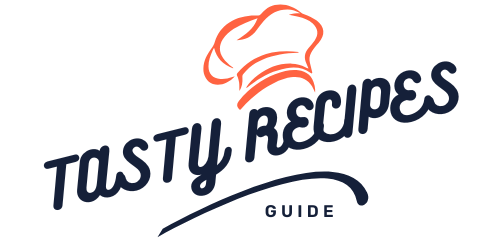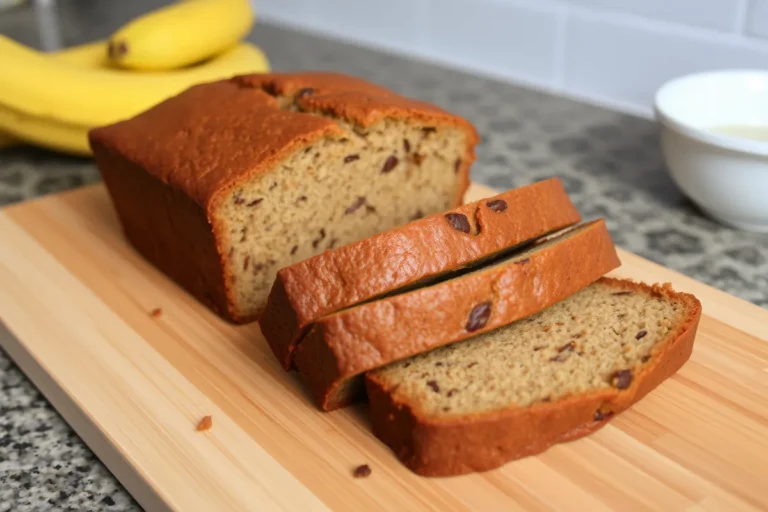Introduction to Banana Bread
What Is Banana Bread?
Banana bread is a beloved baked good that blends the sweetness of overripe bananas with a moist, cake-like texture, making it a universal comfort food. While technically a quick bread due to its leavening process using baking soda or powder instead of yeast, it effortlessly bridges the gap between dessert, snack, and breakfast. Its simplicity makes it an accessible recipe for bakers of all skill levels, while its versatility allows for endless customizations, from adding nuts and chocolate chips to experimenting with spices and alternative flours. This timeless treat has captured the hearts of food lovers across the globe, evoking nostalgia and culinary creativity alike.
The History and Origins of Banana Bread
The origins of banana bread can be traced back to the early 20th century, coinciding with the advent of modern baking powder and soda. As bananas became more accessible, resourceful cooks began using overripe fruit in baked goods to reduce waste. The recipe gained popularity during the Great Depression, offering a cost-effective treat. Its timeless appeal has persisted, evolving through generations and across cultures.
Why Banana Bread Is a Timeless Favorite
Banana bread remains a favorite for its versatility and comforting taste. It can be easily adapted with mix-ins like nuts, chocolate, or fruits to suit personal preferences. Additionally, the recipe’s simplicity makes it approachable for both novice and experienced bakers, ensuring its enduring popularity.
Key Ingredients in Banana Bread
The Role of Bananas in the Recipe
Bananas are the star of the show, providing both sweetness and moisture. Overripe bananas with brown spots are ideal, as they are easier to mash and naturally sweeter. Their high sugar content helps achieve the classic flavor and texture of banana bread.
Choosing the Right Ripeness
When selecting bananas, opt for those with a peel that has prominent brown spots. These bananas are perfectly ripened, offering maximum sweetness and flavor. Green or just-yellow bananas lack the depth of flavor needed, while overly blackened bananas may add an unpleasant bitterness.
Other Essential Ingredients
Banana bread’s remaining ingredients play equally important roles in creating its delightful texture and flavor.
Flour Varieties for Different Textures
The type of flour you choose influences the bread’s texture. All-purpose flour is most common, delivering a classic structure. For a denser, nuttier flavor, whole wheat flour is an excellent alternative. Gluten-free flours can also be used with appropriate binders for those with dietary restrictions.
Sweeteners: Sugar, Honey, or Alternatives
Sweeteners balance the banana’s natural sugars. While granulated sugar is traditional, alternatives like honey, maple syrup, or coconut sugar can be used for added complexity. For a lower-calorie option, consider sugar substitutes like erythritol or stevia.
Mastering the Perfect Banana Bread
Step-by-Step Guide to Making Banana Bread
Creating the perfect banana bread is both an art and a science. By following a few key steps and understanding the nuances of the recipe, you can consistently bake a loaf that’s moist, flavorful, and satisfying.
Preparing Your Ingredients and Tools
Before you start, gather all your ingredients and tools. Preheat your oven to the recommended temperature (usually 350°F or 175°C) and grease your loaf pan. This step ensures a smooth baking process and prevents sticking. Essential tools include a mixing bowl, whisk or spatula, and a measuring cup. Sift your dry ingredients to avoid lumps and ensure even mixing.
Mixing Techniques for a Moist Texture
The secret to a moist banana bread lies in how you mix the ingredients. Start by mashing the bananas thoroughly to achieve a creamy consistency. Combine the wet ingredients (bananas, eggs, oil or butter, and sweetener) in one bowl and the dry ingredients (flour, baking soda, salt) in another. Gradually fold the dry mixture into the wet one, being careful not to overmix. Overmixing can lead to a dense, chewy loaf instead of a light, tender crumb.
Common Variations of Banana Bread
Banana bread’s adaptability allows bakers to create countless variations, making each loaf unique.
Adding Nuts: Walnuts, Pecans, and More
Nuts are a popular addition, offering a satisfying crunch and complementary flavor. Walnuts are the most traditional choice, but pecans, almonds, or even hazelnuts can be used. Toast the nuts lightly before adding them to the batter for enhanced aroma and taste.
Chocolate Chip Banana Bread
For a dessert-like twist, add chocolate chips to your batter. Semi-sweet or dark chocolate pairs beautifully with the banana’s natural sweetness. For a gourmet touch, consider using chopped chocolate bars instead of chips to create pockets of molten chocolate throughout the bread.
Vegan and Gluten-Free Options
Adapting banana bread for dietary needs is simple. Replace eggs with flaxseed meal or applesauce for a vegan version, and use plant-based milk instead of dairy. Gluten-free flours, such as almond or oat flour, can create delicious alternatives without compromising taste. For added structure in gluten-free recipes, incorporate xanthan gum or psyllium husk.
Tips for Achieving Bakery-Quality Results
Avoiding Common Mistakes
To ensure success, avoid common pitfalls. Overmixing is the most frequent error, leading to tough bread. Another mistake is using bananas that are either underripe or overly ripe, which can affect both flavor and texture. Measure your ingredients accurately, as too much flour can result in dryness.
Baking Times and Temperature Guidelines
Proper baking is crucial. Use the middle rack of your oven for even heat distribution, and check the loaf with a toothpick or skewer around the 50-minute mark. If it comes out clean or with a few moist crumbs, the bread is ready. If the top browns too quickly, tent it with foil to prevent overbaking.
Exploring Banana Bread Culture and Beyond
The Global Appeal of Banana Bread
Banana bread is more than a comforting baked good—it represents a universal love for simplicity and creativity in the kitchen. Its widespread appeal stems from its adaptability, affordability, and the nostalgic feelings it evokes. The basic ingredients of banana bread are readily available in most kitchens, making it an accessible recipe for people across cultures.
How Different Cultures Adapt the Recipe
Banana bread is a culinary chameleon, adapting effortlessly to the flavors and traditions of different regions:
- Tropical Variations: In the Caribbean and Southeast Asia, coconut milk or grated coconut is often added to banana bread, lending it a tropical flair. Plantains, a starchier relative of bananas, are sometimes used as an alternative base.
- Spiced Delights: In South Asia, aromatic spices like cardamom, cinnamon, and clove give banana bread a distinctively warm and complex flavor.
- European Influences: In European countries, banana bread is often enriched with marzipan or nut-based fillings for a festive touch. Dried fruits like raisins or currants are popular additions.
- Latin American Flavors: Dulce de leche, a sweet caramel-like sauce, is drizzled or swirled into banana bread batter in Latin American variations, creating a decadent treat.
These cultural adaptations showcase banana bread’s versatility and its ability to bring together global flavors while retaining its comforting essence.
Health Benefits of Banana Bread
Banana bread can be indulgent, but it also offers nutritional benefits when prepared with wholesome ingredients. It’s a prime example of how thoughtful baking can blend health and enjoyment.
Nutritional Value of Ingredients
Bananas are rich in potassium, essential for maintaining heart health and muscle function. They’re also a source of dietary fiber, which aids digestion. Whole-grain flours, when used in banana bread, add even more fiber and nutrients like iron and magnesium. Nuts, such as walnuts and pecans, contribute omega-3 fatty acids, promoting brain health.
Reducing Sugar and Fat Without Sacrificing Flavor
For a healthier banana bread, consider these tweaks:
- Replace white sugar with natural sweeteners like honey, maple syrup, or mashed dates.
- Use unsweetened applesauce or Greek yogurt as a substitute for butter or oil to reduce fat content while keeping the bread moist.
- Incorporate superfood add-ins like chia seeds, flaxseeds, or cacao nibs for an additional nutrient boost.
These adjustments not only make banana bread healthier but also add unique flavors and textures, ensuring it remains a guilt-free pleasure.
Creative Uses for Banana Bread
Banana bread’s versatility extends far beyond a standalone loaf. It’s a canvas for culinary creativity, easily transformed into a variety of dishes.
Turning Banana Bread into Breakfast, Snacks, or Desserts
- Breakfast: Turn banana bread into a wholesome breakfast by topping slices with almond butter, honey, and sliced strawberries.
- Snack Time: Make banana bread into muffins for portable, portion-controlled snacks.
- Dessert: Serve a warmed slice with a dollop of whipped cream or a drizzle of chocolate sauce for an elegant dessert option.
Leftover Banana Bread Ideas
Leftover banana bread can be repurposed into delightful new dishes:
- French Toast: Dip slices in an egg and milk mixture, then pan-fry for a decadent take on French toast.
- Banana Bread Ice Cream Sandwiches: Layer slices of banana bread with your favorite ice cream, freeze, and enjoy.
- Croutons for Salads and Parfaits: Toast banana bread cubes to use as unique croutons for fruit salads or yogurt parfaits.
- Banana Bread Trifle: Layer cubes of banana bread with whipped cream, fruit, and pudding in a glass for an eye-catching dessert.
Where to Buy or Order Banana Bread
If baking isn’t your forte or you’re in the mood for instant satisfaction, there are plenty of options to buy banana bread from professional bakers or retailers.
Popular Bakeries and Cafes
Many local bakeries and cafes offer banana bread with innovative flavors. For example:
- Artisan bakeries might incorporate unique ingredients like lavender or tahini.
- Coffee shops often pair banana bread with specialty drinks, creating a perfect café treat.
Look for places that specialize in baked goods or use organic and seasonal ingredients for a premium experience. Chains like Starbucks frequently offer banana bread, but local bakeries can surprise you with their original takes.
Homemade vs. Store-Bought: Pros and Cons
When deciding between homemade and store-bought banana bread, consider the following:
- Homemade: Allows for complete customization, enabling you to experiment with flavors, dietary needs, and ingredient quality. However, it requires time and effort.
- Store-Bought: Provides convenience and consistency, though it may include preservatives or have higher sugar content. Always check the ingredient label if health is a concern.
Purchasing banana bread from high-end bakeries or cafes can give you a taste of creative and artisan versions that might inspire your next baking adventure.
People Also Ask (PAAs)
- What is the best type of banana to use for banana bread? Overripe bananas with brown spots are ideal, as they provide the sweetest flavor and moist texture.
- Can I make banana bread without baking soda? Yes, you can substitute baking soda with baking powder. Use 1 teaspoon of baking powder for every ½ teaspoon of baking soda.
- How do I store banana bread to keep it fresh? Wrap it tightly in plastic wrap or store it in an airtight container. It can be refrigerated for up to a week or frozen for up to three months.
- What’s the secret to moist banana bread? Use overripe bananas, avoid overmixing the batter, and ensure the correct balance of wet and dry ingredients.
- Can banana bread be made vegan or gluten-free? Yes, use egg substitutes like flax eggs and replace flour with gluten-free alternatives like almond or oat flour.

